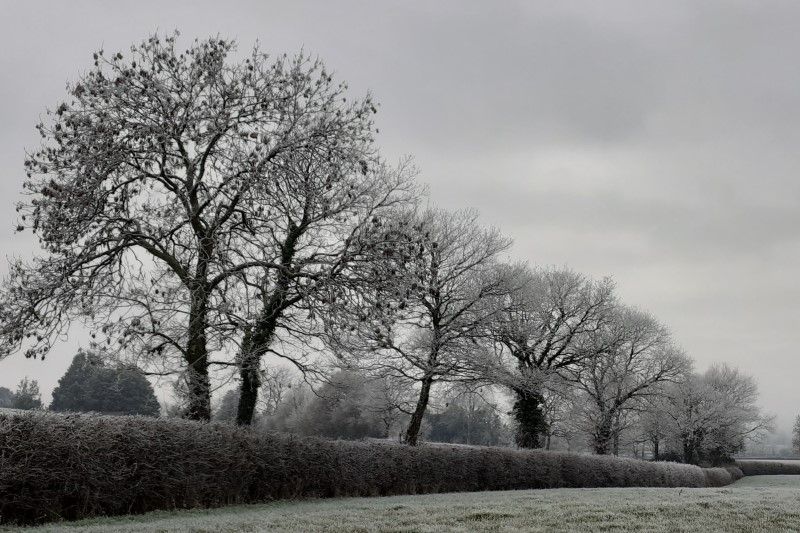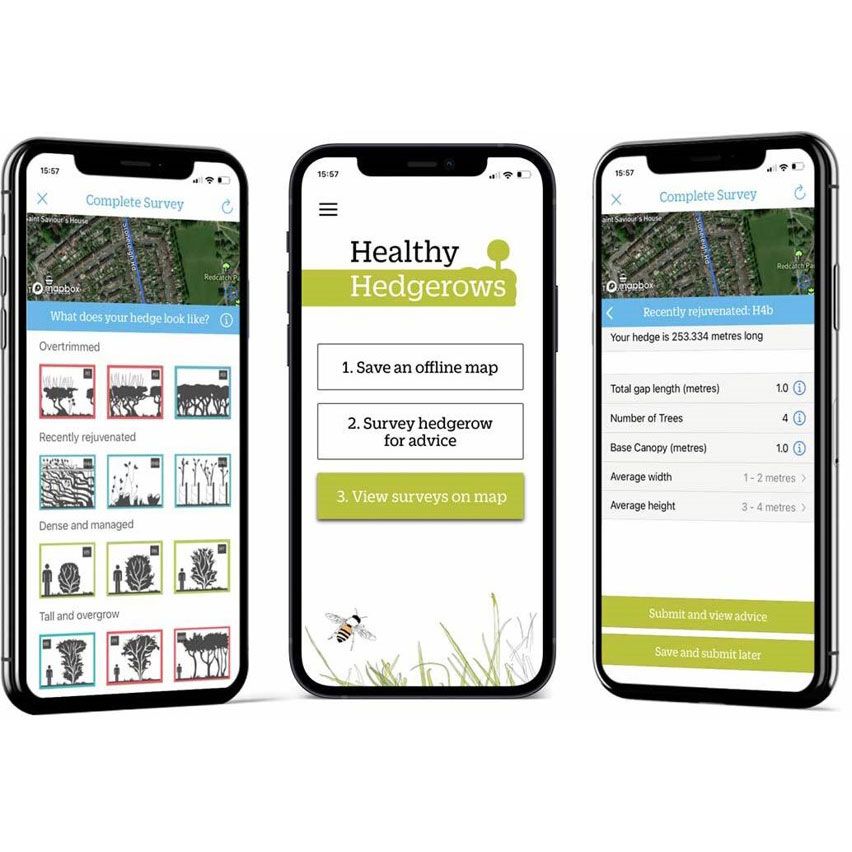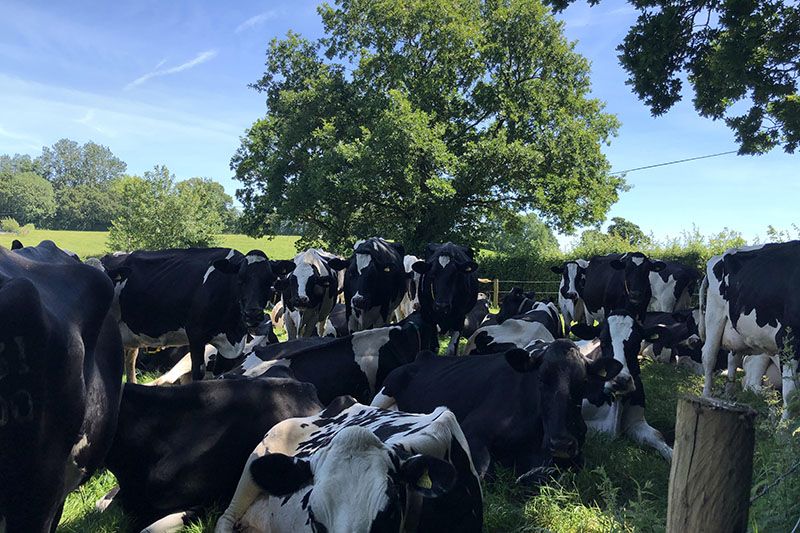Hedgerow trees

The number of hedgerow trees has been in sharp decline over the decades but with a few simple steps, you can establish and maintain healthy trees for a long time to come
Hedgerow tree loss
The number of hedgerow trees in our hedges has been in sharp decline over the decades. We lost considerable numbers to Dutch elm disease. Now we’re on the brink of losing a huge number to ash dieback (and sadly, ash is one of the most common hedgerow trees) and, in general, older hedge trees are dying at an increasing rate.
Add to this, the way we have been managing our hedge trees has not led to enough new hedge trees being established, and it’s clear that there is an emerging problem. Current rates of young tree recruitment are less half the number we need to just maintain the current tree population.

The striking comparison of old maps with current satellite images, shows just how many hedgerow trees we used to have compared with now. The dots on the map on the left, an old Ordinance Survey map of the 19th century, are all mature hedge trees; a startling difference when compared with what those same hedges look like now.
This website allows you to see the same comparison across the country.
A few benefits of hedgerow trees
Why’s it important to maintain trees in our hedgerows? Of course, having more trees in a hedge may make it slower to trim, but there are a huge number of advantages to having a healthy population of hedgerow trees:
- Shade for livestock, which will be increasingly important with the long hot summers we are experiencing with climate change
- Shelter for livestock welfare, especially with increasingly wet and stormy winter/spring conditions
- Hedgerow trees flower and fruit, important in years where the hedge below them is cut and won’t provide so much food for wildlife
- Improving habitat – over half the priority species using hedgerows require hedge trees; for food, shelter and nesting. They also support important animal behaviours – birds sing from them and use them as territory markers, butterflies gather and mate, bats prefer hedges with trees to echolocate along
- Increase carbon storage in a hedge, and can offer a more stable, long term store; whilst the hedgerows below them will need to go through periodic rejuvenation, hedge trees can persist for generation after generation
- Establishing trees in hedgerows doesn’t take land out of production
- Flexible uses for wood fuel, coppicing, pollarding or grown for harvestable fruit and nuts
Hedgerow tree diversity
There are several advantages of having a diversity of different types of hedge tree; it adds flexibility as different trees suit different locations, it adds some protection in the face of any new emerging tree disease, and it creates a more diverse set of habitats which is better able to feed and nest our diverse wildlife.
One great example of this latter point comes from hairstreak butterflies. Brown hairstreak butterflies rely on young blackthorn leaves which feeds the caterpillars, but they also need hedgerow trees, particularly big ash trees to act as a gathering point to mate. Purple hairstreak butterflies on the other hand gather at oak trees, and white letter hairstreak at elm.
Only with a diversity of trees can we cater to the diversity of requirements of our native wildlife.
For more information about how, why and where to establish new hedgerow trees, please see our establishing hedgerow trees page.
Health-check your hedgerows

The Healthy Hedgerows survey provides instant feedback about the health of the hedge and bespoke management advice. The data that you contribute helps us to understand the overall health of hedgerows at a national scale so that we are able to direct our conservation work. Learn more:

